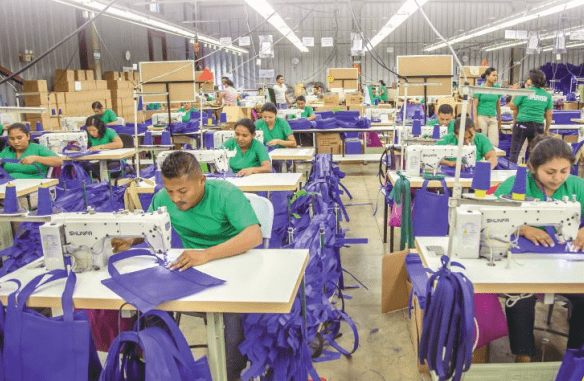Nicaraguan exports have maintained constant growth in the textile sector until this industry has become the leader in foreign trade in that country, according to a report by the World Trade Organization (WTO).
Nicaragua depends on international trade for its development. The lower deficit in merchandise trade was one of the key elements that contributed to the current account surplus in 2019.
This was the result of a lower demand for imported non-oil goods, particularly capital goods, and the dynamism in exports from free zones, mainly from the textile industry.
In recent years, Nicaraguan merchandise exports have been affected by the lower international prices of the main export products, especially coffee.
Thus, according to the WTO, textiles and their manufactures are now the main exports, contributing 29.3% of total exports in 2019.
Nicaragua exports its merchandise mainly to the United States (61.7% of the total exported in 2019); to the other members of the Central American Common Market (MCCA) and Mexico.
Exports
In 2019, 96.7% of the export earnings that Nicaragua received were generated by exports to economies with which it has free trade agreements.
As in the case of exports, textiles and their manufactures are the main Nicaraguan imports, going from 2.0% of the total imported in 2012 to 21.7% in 2019.
Next, mineral products are located, mainly fuels. Merchandise imports from economies with which Nicaragua has preferential agreements represented 74.5% of the total in 2019.
Nicaraguan imports of goods come mainly from the United States (almost 30% of the total in 2019), followed by China and Mexico, which also increased during the period under review.
Merchandise trade by main products, 2012 and 2019

Business
At the end of 2019, the free zone regime had 49 active industrial parks and 219 user companies in operation (174 in 2013), which in 1,816,680 m2 of industrial roof (1,339,760 m2 in 2013) generated 121,913 direct jobs ( 109,310 in 2013) and $ 905.41 million of added value.
As of July 2020, the benefited population was approximately 2.2 million inhabitants.
In 2019, 42.2% of user companies were located in Managua, of which around a third (74) operated in the textile and clothing sector; 16.7% in the tobacco industry; 14.9% in outsourced services; and 11.3% in agribusiness.
Most of these user companies are from the United States (69), followed by South Korea (37), and Nicaragua (32). The United States is also the main destination for exports from Nicaragua’s free zones (about three-quarters), and the origin of about a third of imports.
![]()

